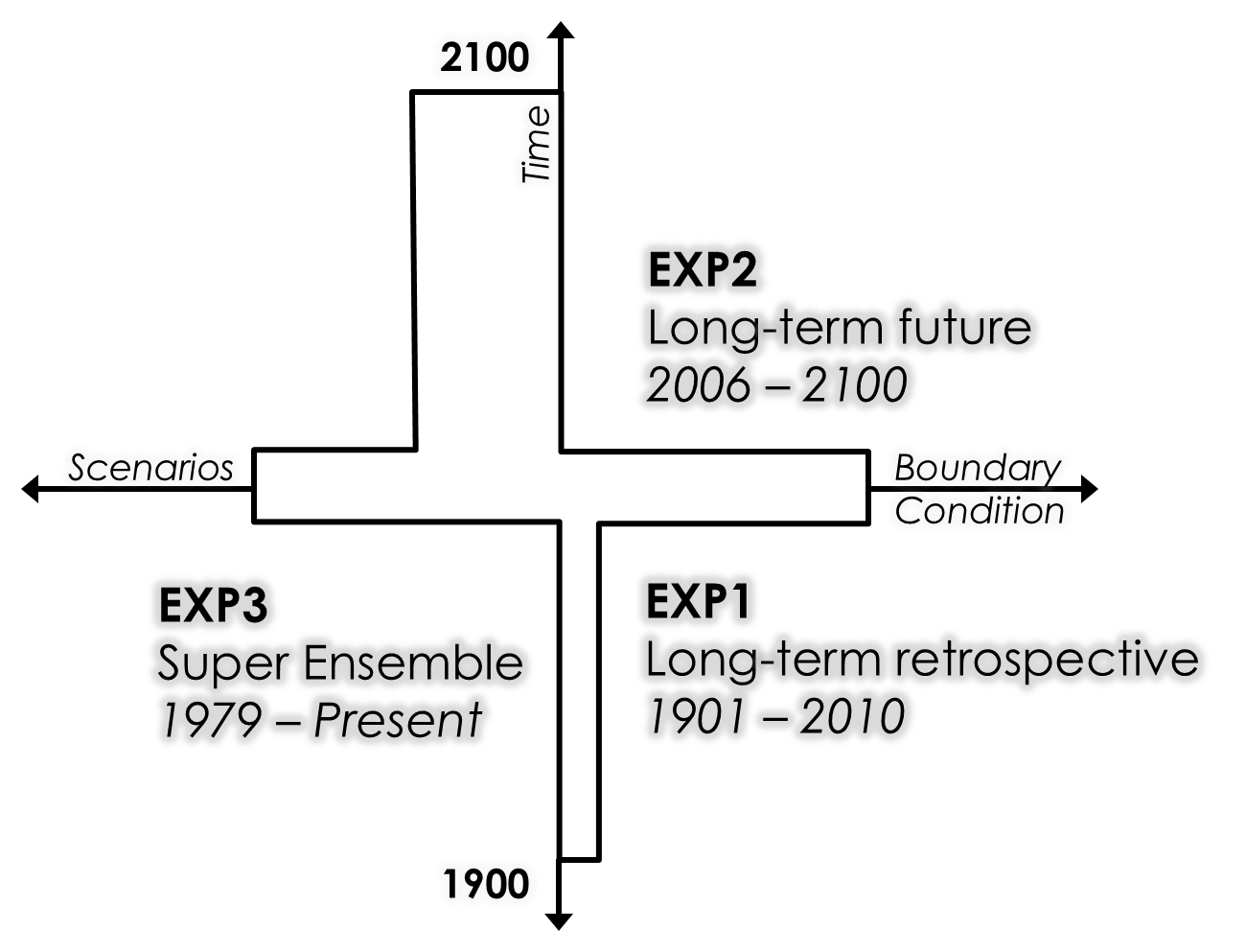Introduction¶
During the last century, the interactions between the components of the climate system have been altered drastically, and anthropogenic effects such as carbon dioxide emissions and land use alterations have been indicated as a major cause for these changes. In spite of the considerable advancements in models and observations during past decades, our knowledge and numerical implementations to large/global scales are still lacking. Representation of the underlying mechanisms and understanding of the role and extent of interactions are crucial for anticipation of future climate and for mitigation of the associated changes. The second phase of the Global Soil Wetness Project (GSWP2; Dirmeyer et al., 2006) produced the first global continuous gridded multi-model analysis of land surface fluxes and state variables with 13 land schemes over a 10-year period (1986-1995). It has been broadly utilized in the hydrology community and its success has evolved into plans for simulations for a longer time span. In the third phase proposed here (GSWP3), a century-long comprehensive and extensive set of quantities for hydro-energy-eco systems will be produced in order to investigate the long-term changes of the components of the energy-water-carbon cycles and their interactions, with appropriate model verifications in ensemble land simulations. It also can contribute to modeling community efforts to evaluate models. By including a wide range of land surface, hydrologic, and ecological models, the impacts of missing/included processes and model uncertainty can be investigated.
Experiment Design¶
GSWP3 will have a ‘cross’ shape set of global offline simulations, which has axes of ensemble and time [Figure 1]. These consist of three experiments: long-term retrospective (EXP1), long-term future climate (EXP2), and a short-term super-ensemble (EXP3). This document briefly describes the simulation protocol for EXP1. The project web page (http://hydro.iis.u-tokyo.ac.jp/GSWP3, under construction) will provide further details of the science, implementation, protocol, and data of the entire project. EXP1 (long-term retrospective experiment) investigates how interactions among energy-water- carbon cycles have changed through the past century (1901-2010) using a multi-model approach over a global 0.5 deg. land grid. Since most land surface models do not have full or uniform representations of water and carbon cycles, we will include various types of models (e.g., so-called first, second and third generation land surface models, hydrologic models, ecological models, and dynamic vegetation models) and will consider time evolution of coupled processes related parameters such as land use/cover, LAI, and CO2. Also, a standard product of the project will be an extensive set of land fluxes and state variables, which has the potential to serve as a long-term land-surface reanalysis. It also will serve as a reference set for the long-term variability of various processes in the terrestrial hydro-energy-eco system that respond to surrounding large-scale climate variability, such as changes in extremes (e.g., flood and drought), land carbon balances, and water and energy inputs to the atmosphere.

Figure 1. GSWP3 Experiment Design